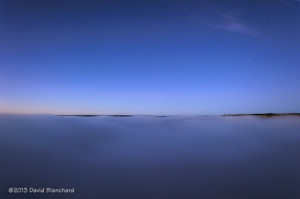Widespread, dense fog covered portions of northern Arizona for more than a week in early December. The fog appeared at Winslow, Arizona (KINW), during the evening of December 3 and finally dissipated on the afternoon of December 12. Similar conditions were experienced in Flagstaff, Arizona (KFLG), with fog appearing on the afternoon of December 4 and finally dissipating in the evening of December 10. For some locations, including Flagstaff, the fog was episodic with periods of dense fog interspersed with clear conditions. Farther to the northeast, including places such as Winslow and the Chinle Valley, the fog was more persistent.

The fog was the result of a heavy rainfall event across northern Arizona December 2–4. Many locations received between 1 and 2 inches of rain. Following the rain, high pressure developed across the southwest and a strong thermal inversion developed. The inversion was finally removed when a trough moved across the region bringing strong southwest winds and steeper lapse rates.

It should be noted that thermal inversions are not rare. Quite the contrary. An inversion commonly occurs at night and during the winter when the angle of the sun is very low in the sky. After last years fog event in the Grand Canyon, some in the media declared that thermal inversions are rare and that the inversion was the cause of the fog. Not really. Both then and now the moisture evaporated out of the soils but was trapped near the ground by the inversion. And, slowly but surely, the moisture content of the lowest few hundred meters of the atmosphere became saturated and fog developed.
Well—enough of the meteorological explanation. What did it look like?
When these shallow fog events occur it is possible to find hills and mountains that are above the inversion so that an observer can look down on the fog. This often results in some amazing photographic opportunities. Anticipating that the fog would occur, I was ready to travel to the Grand Canyon to capture images of the fog filling the canyon. Well, it didn’t quite fill the canyon—at least, not like last year. But there were still photographic opportunities.
I also found myself on the lower slopes of the San Francisco Peaks north of Flagstaff and was able to capture images and video of the fog streaming across the pass between the San Francisco Peaks and O’Leary Peak as well as the sea of fog across the Little Colorado River Valley.






